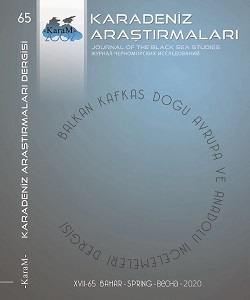Kutadgu Bilig’de Semboller Üzerinden Budist Etki
Budist Effect on Symbols in Kutadgu Bilig
Author(s): Hacer TokyürekSubject(s): Middle Ages, Islam studies, Comparative Studies of Religion, Turkish Literature
Published by: Karadeniz Araştırmaları Merkezi
Keywords: Kutadgu Bilig; Symbolism; Buddhism;
Summary/Abstract: Kutadgu Bilig, one of the first Islamic period works, is an allegorical work created with symbolic expressions. The most important symbols in the work are Kuntogdı, Aytoldı, Ogdilmis and Odgurmıs, which are the four main heroes. When these heroes are considered, it will be seen that many cultural, language and religion interactions have been tried to be given through them or the items they use. In this context, although Kutadgu Bilig is the first Turkish-Islamic period work, it is possible to encounter the remnants of other nations and religions when the sub-lines in the work are examined in full. One of these religions is Buddhism. Although it is not known exactly when Buddhism started to spread among Turks, the Buddhist influence started to show itself more intensively in the 9th century and it continued until the 13-14 century when all the Uighurs were included in Islam. When the geography in which Kutadgu Bilig was written is examined, it is seen that different religions lived together in this geography and many works were written here in parallel, both Buddhist and Islamic. It is possible to see the Buddhist influence in Kutadgu Bilig. In this study, an investigation will be made on the Buddhist symbols in Kutadgu Bilig.
Journal: Karadeniz Araştırmaları
- Issue Year: 2020
- Issue No: 65
- Page Range: 203-216
- Page Count: 14
- Language: Turkish

